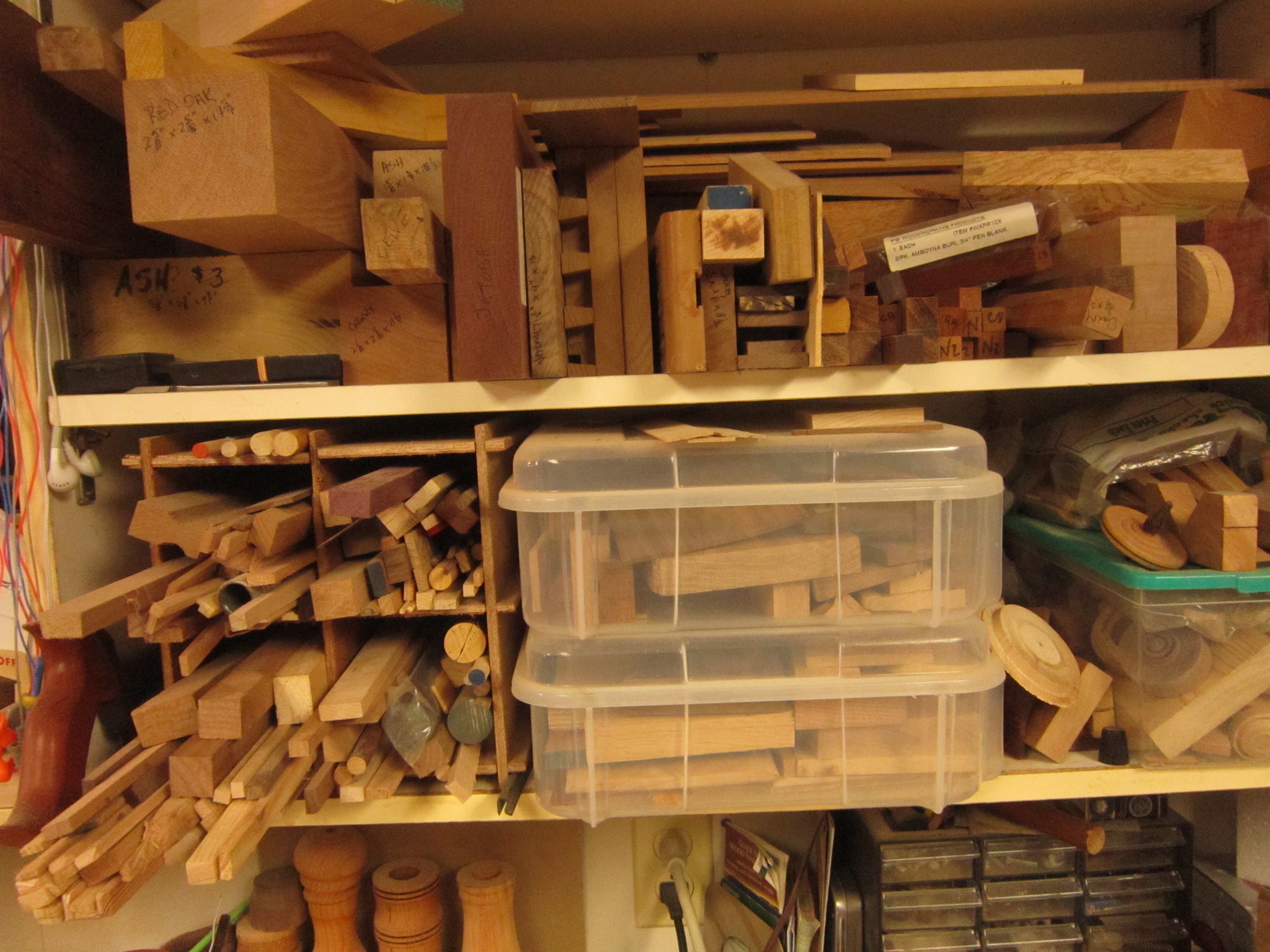Today’s post is written by Stephen Parsons
As a kid, my first impressions of wood were those concerning its utility. Wood was for whittlin’, buildin’, and burnin’ and I knew certain woods were better at those things than others. As I got a little older and had the chance to work with my Dad in his workshop, I came to recognize distinctions between species and cuts of wood. To this day, I believe that one of the things that may have set me on a path to enjoy woodworking so much was the smell of wood in that workshop and the appreciation of the distinct odors of cedar, spruce, pine and birch. I still love it when I return to my shop after an errand or meal and can catch the scent of freshly cut wood from an earlier project.
Becoming a serious woodworker meant learning a great deal more about wood’s characteristics and that learning journey is a continuing one. Wood, like so many media, is complex and diverse with greatly different characteristics from species to species and even within species depending on locale, cut, seasoning, and storage methods.
Obvious to most people is the distinct colour and grain of the wood. Consider the light/ dark contrast between a beautiful snow white cut of ash or beech and the deep tones of ebony or black walnut (great options if you are doing a chess set). How about the redness of a bloodwood, purpleheart or cherry against the yellow and golden hues of oak, maple, and birch. In some woods, the grain is so tight as to be nearly impossible to pick out – such as macassar ebony or a norway maple, while others like birdseye maple, bocote and many burls and spalted woods have so much figuring that their grain characteristics are prized (and often very expensive) as highlight pieces.
Hardness of wood is also of interest to a woodworker. A common measure of hardness is the Janka hardness test which generally identifies how much force is required to embed a steel ball into a particular species of wood (in various measures but often in newtons). The range and diversity is really surprising from very soft woods like balsa, pine and basswood which are very weak and soft (around 600-2000 newtons), to extremely strong, hardwoods like teak, ironwood, and mahogany (10,000 to 20,000 newtons). To a woodworker, knowing the hardness helps to determine overall project strength, brittleness, durability, cut characteristics as well as possible impact on tools and equipment.
 Porosity and cut are also important to recognize. Porosity of wood may impact the amount of shrinkage – as I discovered quite dramatically in building my artists’ laptop desk. With porous pine softwood main panels and hardwood (walnut) breadboard ends, the shrinkage of the panels in dry periods (such as today, winter in Nova Scotia) leads to an inability to close the case because relative to the breadboard ends and the horizontal grain of the sides, the main cover shrinks away from the original fitting of the latch. The placement of the cut within the tree – for example close to center (heartwood) versus close to the surface (sapwood) and angle of cut also impacts how much movement and type of grain you will see in the piece.
Porosity and cut are also important to recognize. Porosity of wood may impact the amount of shrinkage – as I discovered quite dramatically in building my artists’ laptop desk. With porous pine softwood main panels and hardwood (walnut) breadboard ends, the shrinkage of the panels in dry periods (such as today, winter in Nova Scotia) leads to an inability to close the case because relative to the breadboard ends and the horizontal grain of the sides, the main cover shrinks away from the original fitting of the latch. The placement of the cut within the tree – for example close to center (heartwood) versus close to the surface (sapwood) and angle of cut also impacts how much movement and type of grain you will see in the piece.
Moisture, natural oils, and features like spalting (caused by chemical reactions in the growing wood) are characteristics that affect the overall look and the functionality of the wood for any given project. Woods that have a lot of natural oil like cedar and cocobolo for example will take a finish much differently than a drier wood like maple, cherry or oak. As a result the change in tone from untreated to finished may be quite substantial, or little at all.
In recent years, Chez Craft has become increasingly conscious of origin and sustainability of wood species. There are actually many species of wood that are endangered and which originate in countries where harvesting practice is not environmentally sound. We have made it a policy to not use species at risk or from countries where forestry practices are blatantly inappropriate. It is the least we can do – for the love of wood. We ask that you consider your options before using a rare or exotic wood. Check the Wood Database if you are unsure.
Meanwhile, if you happen to drop into East Coast Specialty Hardwoods in Burnside or Halifax Specialty Hardwoods in Bedford and see some guy lurking in the stack and sniffing the wood, please don’t call the cops – it may just be me – I’m still on that learning journey.
S.





Recent Comments